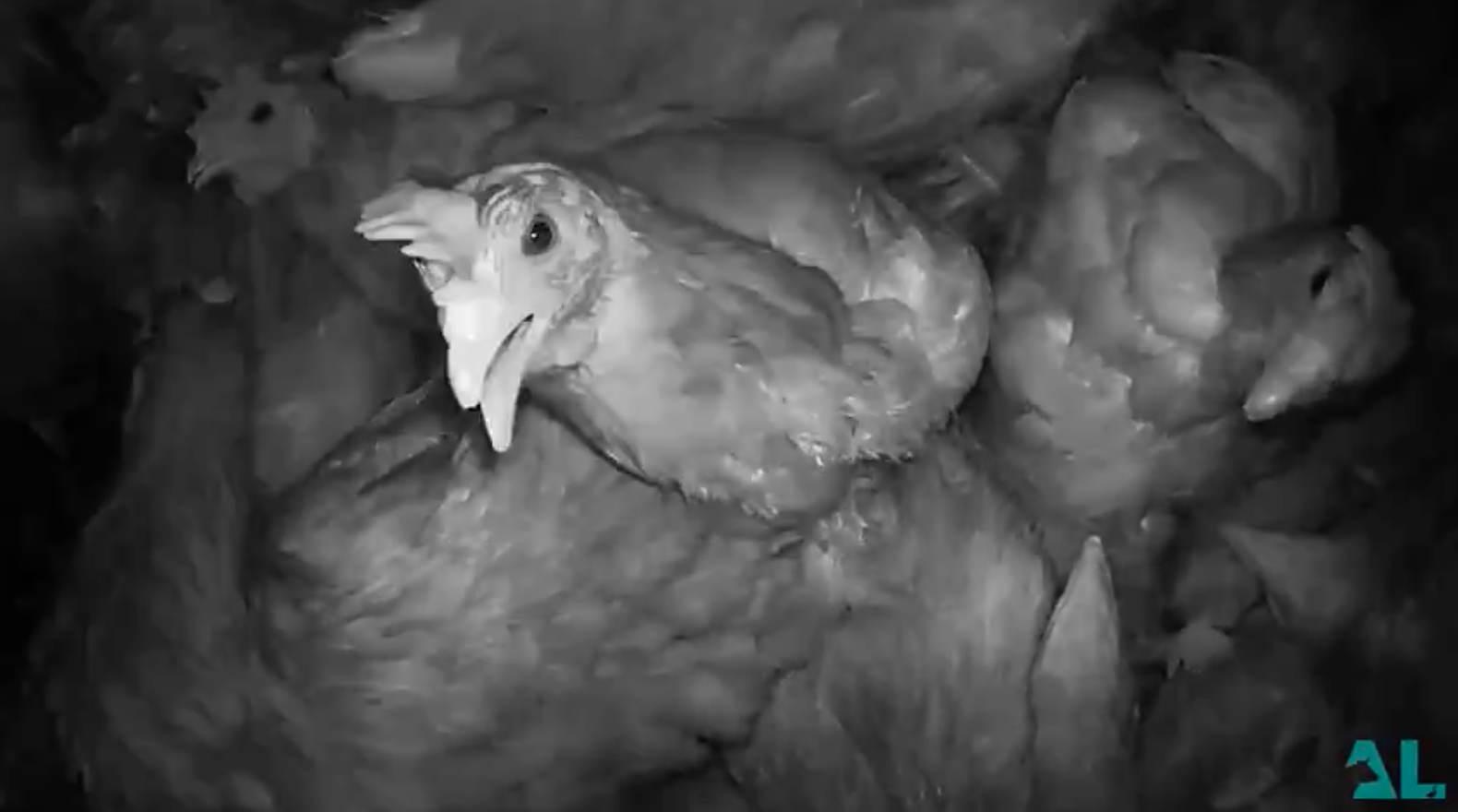Exploited for Eggs
The abuse of female chickens in the egg industry.
All chickens begin their lives in the hatchery. Eggs are collected from the parent birds, stored, incubated, and hatched over 31 days. Once hatched, male and female chicks are sorted onto separate conveyor belts by sex. Male chicks are considered useless by the egg industry as they do not produce eggs. To learn what happens to male chicks, read “Are Men Useless?”
The female chicks are forced through painful debeaking machines that cut off the tip of their beaks and burn the wound shut to cauterize it. Hens are debeaked to minimize the harm they can do to each other in the tight confinement of egg farms. After debeaking, the chicks are then stacked in trays and trucked to pullet-rearing farms, where they’ll stay for four months until they begin laying eggs. These hens are then sent out to egg farms across the country.
Battery Cages
Around two-thirds of the 372 million layer hens in the United States are housed in battery cages. Each shed can contain up to 100,000 hens, with between four and twenty hens per cage. Each hen is only allowed a space smaller than an A4 sheet of paper. They are unable to stretch their wings or express any natural behaviors, such as dust bathing, perching, or foraging.
Decades of genetic manipulation and selective breeding have forced hens to lay an egg almost every day for a total of up to 330 per year, compared to the 10-15 that a wild hen would lay. As they age, the poor environment and frequent stress of egg-laying take a toll on their health, indicated by a gradual loss of all of their feathers and an increasingly pale comb, suggesting anemia.
Deaths inside the cages are common and, due to the size of the facilities, can be easily missed for long periods, forcing the surviving hens to live on top of the rotting carcasses. The surviving hens walk over, defecate on, and peck at their ‘sisters’’ corpses.
Newer cage systems collect the feces onto conveyor belts beneath the cages, while older systems allow it to pile up underneath. Birds who manage to escape the cages are left to die in these manure pits.
Between 18 and 24 months of age, after living in the cage for over a year, their egg production will have slowed significantly enough to be considered “spent.” To learn more about the grueling egg production process, read “Egg-scrutiating.” They are “depopulated” (mass killing), pulled from their cages, and stuffed into crates, often resulting in bone fractures due to rough handling. They are either gassed to death and then buried or rendered, or sent to the slaughterhouse and replaced by new four-month-old hens.
Free Range
Up until 2016, there were no national standards on what could be claimed as free-range eggs. Now, free-range farms are capped at a maximum outdoor density of 10,000 hens per hectare (one per square meter), though they still spend most of their time packed together in large sheds.
Chickens naturally form and live within a social hierarchy called a pecking order but are only able to recognize around 100 other chickens. In sheds or paddocks with thousands of other birds, their inability to maintain this pecking order results in chaos. The weak birds are picked on with no way to escape.
Diseases spread rapidly. In 2013, an outbreak of avian influenza at a New South Wales free-range egg farm, believed to have been contracted from wild ducks, led to the culling (killing a large population of animals at a time) of over 400,000 farmed hens.
Many of the larger free-range farms also have cage farms on the same property, with the eggs from both ending up in the same packing shed. A 2009 analysis of Egg Corporation data indicated that as many as one in six eggs sold as “free-range” were laid by caged or barn hens.
Slaughter
All egg-laying hens, including free-range and caged, are sent to slaughter from just 12 months of age, far short of their 10-year natural lifespan. At the slaughterhouse, the hens are shackled upside-down on a moving line. They are lowered into a bath of electrified water to stun them prior to their throats being slit by an automated blade. But if they lift their heads, they can miss the stun bath and face the blade fully conscious, ultimately drowning in scalding water further down the process.
The slaughtered hens largely end up in lower-grade chicken meat products, such as mince, or are rendered into poultry meal for use in pet food or fed back to farmed animals.
Eggs are not a victimless ingredient. The torture, abuse, cruelty, and exploitation of hens is unfathomable. So long as eggs are used, this cycle will continue. Will you aid in its sustention or abolition?
*The majority of the information included in this article is from Dominion (2018).
















